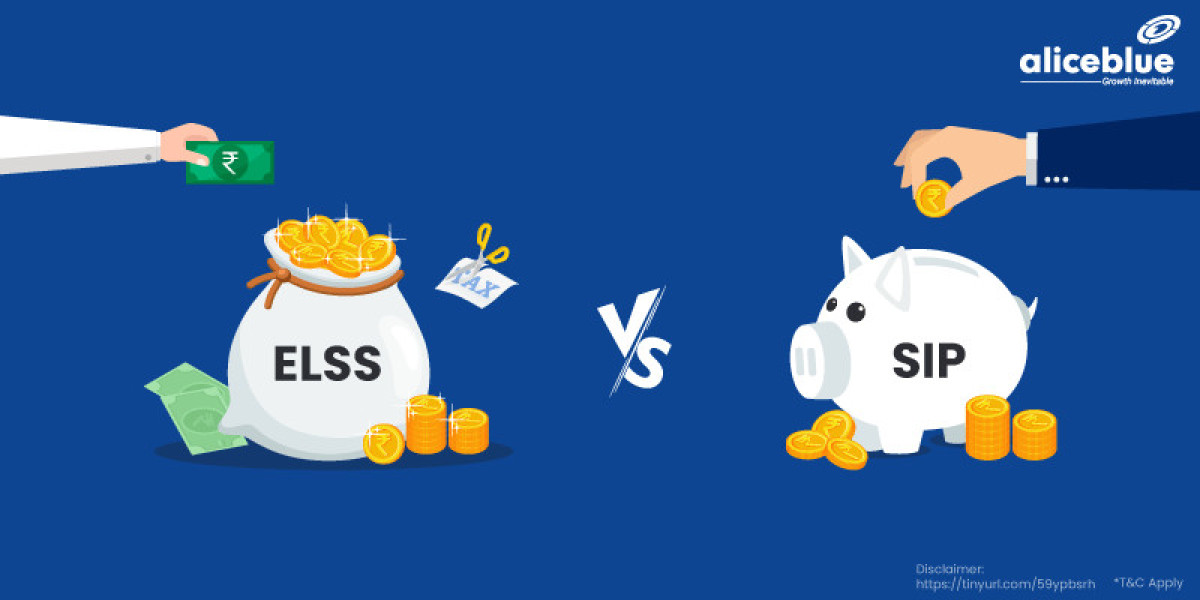When it comes to investing in the Indian market, two popular options often come up for consideration: Systematic Investment Plan (SIP) and Equity Linked Savings Scheme (ELSS). Both SIP and ELSS offer unique benefits and cater to different investor objectives. In this article, we will explore the SIP Vs ELSS, their respective features, and help investors make informed choices based on their financial goals and risk preferences.
SIP: Building Wealth through Regular Investing A Systematic Investment Plan (SIP) is an investment strategy that allows investors to invest a fixed amount regularly in a mutual fund scheme. Here are some key features of SIP:
Regular Investments: SIPs provide the opportunity to invest a fixed amount at regular intervals, such as monthly, quarterly, or annually. This disciplined approach encourages regular savings and eliminates the need for timing the market.
Rupee Cost Averaging: With SIPs, investors benefit from rupee cost averaging. When the markets are high, the fixed investment amount buys fewer units, and when the markets are low, it buys more units. Over time, this can help reduce the impact of market volatility on the overall investment.
Flexibility and Convenience: SIPs offer flexibility in terms of investment amount and duration. Investors can start with a small amount and increase it gradually. They also have the option to pause, modify, or terminate the SIP based on their changing financial circumstances.
ELSS: Tax-Saving Potential with Long-Term Wealth Creation Equity Linked Savings Scheme (ELSS) is a type of mutual fund that not only provides the opportunity for capital appreciation but also offers tax benefits under Section 80C of the Income Tax Act. Here are some key features of ELSS:
Tax Benefits: ELSS investments are eligible for a tax deduction of up to Rs. 1.5 lakh under Section 80C of the Income Tax Act. This makes ELSS an attractive option for individuals looking to save taxes while investing in equities.
Lock-in Period: ELSS funds come with a mandatory lock-in period of three years. During this period, investors cannot redeem their units. However, this lock-in period encourages long-term investment horizons and potentially higher returns.
Diversification: ELSS funds invest in a diversified portfolio of equities across different sectors and market capitalizations. This diversification helps spread the risk and can potentially provide stable returns over the long term.
Potential for Wealth Creation: ELSS funds have the potential to generate significant wealth over time, as they invest in equity markets with the objective of long-term capital appreciation. However, it's important to note that equities are subject to market risks, and past performance is not indicative of future results.
Choosing Between SIP and ELSS:
Investment Objective: Consider your investment objective. If your primary goal is to build long-term wealth and you have a higher risk appetite, SIPs in diversified equity funds or sector-specific funds may be suitable. If tax savings are a priority, ELSS funds can provide tax benefits along with potential long-term growth.
Risk Tolerance: Assess your risk tolerance. SIPs in equity funds can be subject to market fluctuations, while ELSS funds also carry market risk, but with the added benefit of potential tax savings. Consider your risk appetite and choose accordingly.
Time Horizon: Determine your investment time horizon. ELSS funds come with a lock-in period of three years, so if you have a shorter time horizon, SIPs in non-ELSS equity funds or debt funds may be more suitable.
Tax Planning: If tax planning is a priority, ELSS funds offer the dual advantage of tax savings and the potential for capital appreciation. Evaluate your tax-saving requirements and choose the investment option that aligns with your financial goals.
Conclusion: Both SIP and ELSS offer distinct advantages and cater to different investor needs. SIPs provide a disciplined approach to regular investing, while ELSS funds offer tax benefits along with the potential for long-term wealth creation. It's important to assess your investment objectives, risk tolerance, time horizon, and tax planning requirements before making investment decisions. Consulting with a financial advisor can provide valuable guidance and help you create a well-rounded investment portfolio based on your specific circumstances.








